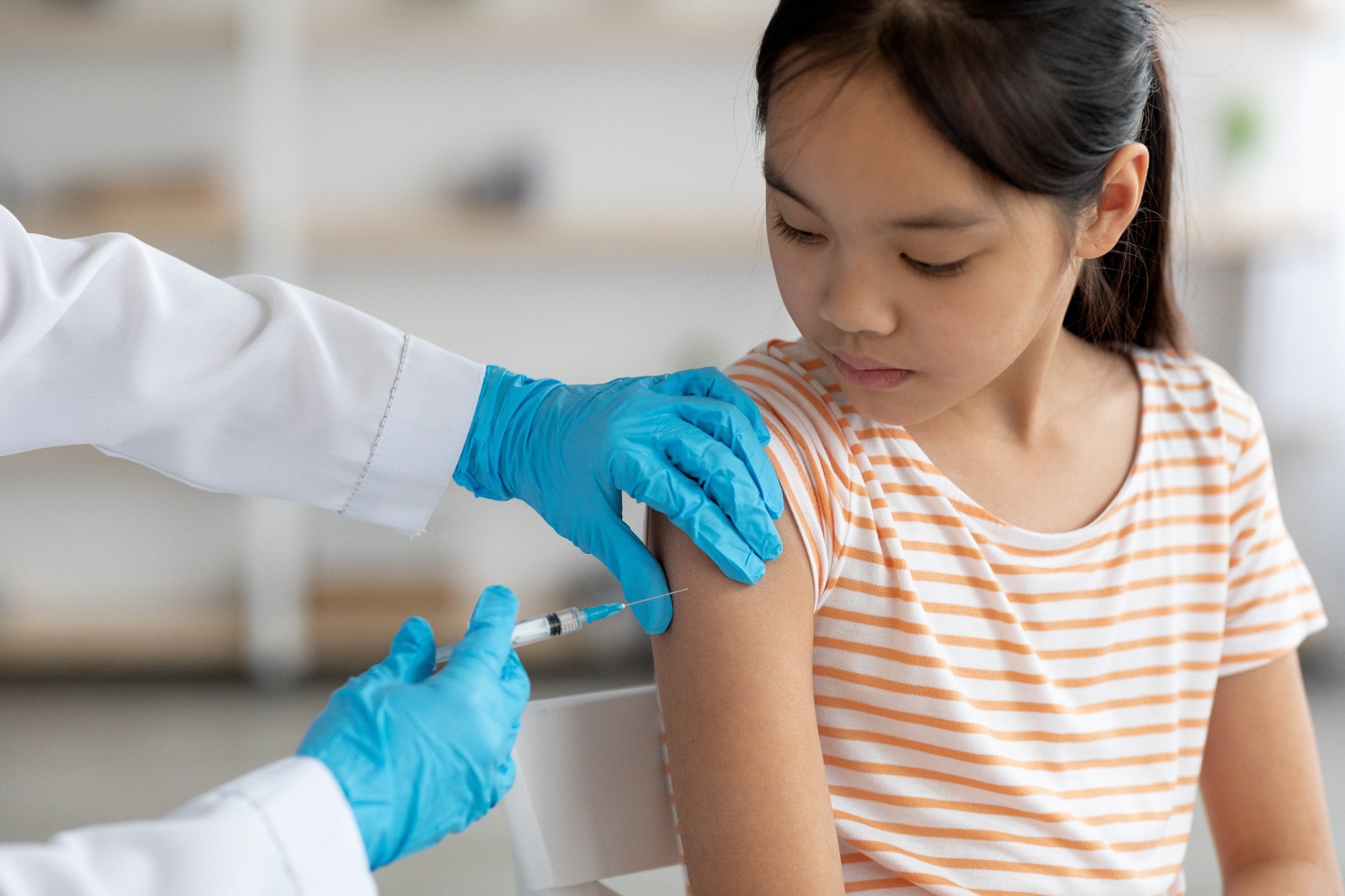A new study recently published in Pediatrics explores the effectiveness of coronavirus disease 2019 (COVID-19) vaccines in preventing long COVID in children.
Study: Vaccine effectiveness against long COVID in children. Image Credit: Prostock-studio / Shutterstock.com
How does long COVID affect children?
Over 2,100 deaths due to COVID-19 have been reported in children below the age of 21 years, which amounts to about 2% of children with severe disease. It remains unclear how many children have been affected by long COVID, defined as the persistence of symptoms that arise one month or more after recovering from acute infection.
Some of the nonspecific symptoms associated with long COVID include brain fog, gastrointestinal symptoms, body pain, and fatigue. Interestingly, the occurrence of long COVID is not proportional to the severity of the initial illness in a significant number of cases.
Long COVID has been reported to be less prolonged and less severe in children as compared to adults; however, it has also been reported more frequently in older children.
About the study
The current study was motivated by the lack of data on how vaccination affects the incidence of long COVID among children.
To this end, the researchers retrospectively examined clinical data from 17 electronic health record (EHR) databases within the National Institutes of Health (NIH) Researching COVID to Enhance Recovery (RECOVER) Initiative PCORnet Program. The aim was to identify healthcare visits following the rollout of COVID-19 vaccines while accounting for factors like sex, race, other illnesses, and healthcare use patterns before COVID-19 exposure.
All participants were eligible for the vaccine at the time of the study, and none documented a diagnosis of COVID-19 within 28 days of their first vaccine dose. After entering the study, vaccinated and non-vaccinated patients were compared for baseline health status and long COVID outcomes.
Probable long COVID was defined as being positive for COVID-19 with two or more diagnoses fitting into long COVID categories within about six months from the acute illness. A diagnosis of long COVID was defined as two or more healthcare visits with diagnosed conditions specific to long COVID. If only one diagnosis was present, the patient was classified as having probable long COVID.
All exposed patients had one or more doses of a COVID-19 vaccine.
What did the study show?
Over half of the children in a total cohort size of approximately one million were vaccinated against COVID-19. About 88% of the study cohort received at least two doses among the vaccinated group.
Vaccinees were more likely to be older, have lower healthcare utilization before the pandemic, and be healthier. Asian and Hispanic children, as well as girls, were more likely to be vaccinated as compared to boys and Black/White children.
Overall, long COVID was present in 0.3% of the study cohort. Among those who developed COVID-19 during the study period, probable long COVID occurred in about 5% of children, while diagnosed COVID-19 was present in 0.8%.
Analysis of vaccine effectiveness (VE) was associated with a 35% risk for probable long COVID among fully vaccinated children. Comparatively, the incidence of diagnosed long COVID was reduced by about 42% among exposed individuals.
Adolescents were associated with a VE of 50% against long COVID as compared to less than 25% among children between five and 11 years of age. At six months, VE was estimated to be 61% compared to only 11% at 18 months.
The mediation analysis revealed that VE against long COVID in children was linked to protective efficacy against COVID-19, including reduced severity of the acute illness.
What are the implications?
This large retrospective study shows a moderate protective effect of SARS-CoV-2 vaccination against long COVID.”
VE against long COVID was higher among adolescents exposed to both the Delta and Omicron strains. Vaccine protection of similar effect sizes was observed for probable and diagnosed long COVID, even among children vaccinated after a previous infection.
Future research should address the role of other factors in reported VE, such as a higher reporting rate among adolescents or higher rates of flu-like and respiratory or neurological symptoms among young children at a greater risk of common childhood infections. Improving the accuracy of how long COVID symptoms are classified with better documentation is also needed to validate these findings. Taken together, these efforts will elucidate VE against newer viral strains and ultimately contribute to future vaccine policies.
Journal reference:
- Razzaghi, H., Forrest, C. B., Hirabayashi, K., et al. (2024). Vaccine effectiveness against long COVID in children. Pediatrics. doi:10.1542/peds.2023-064446.
